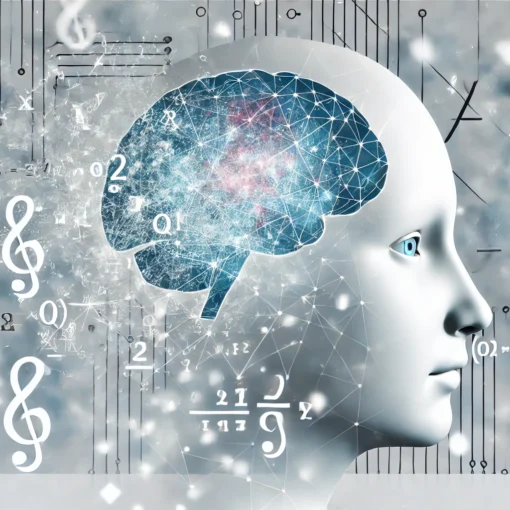History has this funny habit of circling back on itself, doesn’t it? Picture this: it’s the late 1980s, and artists are staring down a new kid on the block—Adobe Illustrator. Some clutch their paintbrushes tighter, muttering about the death of “real” art, while others can’t wait to see where this digital thing takes them. Fast forward to today, and here we are again, only this time it’s AI tools like DALL-E and Midjourney stirring the pot. Same debate, different decade. So, let’s take a stroll through the past and present to see why AI is just the latest tool in the artist’s ever-growing kit—and why this argument is anything but new.
The ‘80s: When Computers Crashed the Art Party
Imagine it’s 1987. The Walkman’s pumping synth-pop, shoulder pads are a fashion statement, and Adobe Illustrator just hit the scene. For graphic designers, it’s a revelation—scalable vectors, endless tweaks, and a shiny new way to keep up with the ad world’s demands. But not everyone’s popping champagne. Traditional artists, the ones who live for the smell of turpentine and the scrape of charcoal, aren’t so sure.
“Why bother sketching by hand when a machine can do it for you?” grumbles Claire, a painter I met years back who still talks about those days like they were a personal betrayal. She wasn’t alone. Many felt the computer stripped art of its soul, turning a craft into a button-pushing exercise. At events like the 1985 SIGGRAPH Art Show, digital works dazzled some and horrified others—critics called them “cold” or “lifeless.” Even Andy Warhol, ever the boundary-pusher, got sideways looks when he played with an Amiga at Lincoln Center. Was this art or a tech trick?
But then there were the early adopters. “It’s not about replacing the brush,” a designer friend once told me, recalling his first Illustrator gig. “It’s about what you can dream up with it.” Advertising folks and illustrators jumped in, churning out sleek logos and layouts that hand-drawn work couldn’t touch. The tool wasn’t the artist—it was the partner.
Today: AI Steps into the Spotlight
Now, let’s hop to 2023. AI image generators are everywhere, turning text prompts into wild visuals. I saw a guy at a coffee shop last week, grinning as he typed “cyberpunk forest” into Midjourney and got back something straight out of Blade Runner. Cool, right? But not everyone’s sold.
“It’s cheating,” my friend Sara, a sculptor, said over drinks the other night. “An algorithm spits it out—where’s the human in that?” She’s echoing what I’ve heard online too: AI art lacks heart, it’s just code playing dress-up. Sound familiar? It’s the same gripes Claire had about Illustrator—swap “computer” for “AI,” and it’s practically a rerun.
Yet, there’s another side. “You still need a vision,” my buddy Jake, a digital artist, argued back. “The AI doesn’t know what I want ‘til I tell it. I tweak the prompt, mess with the output—it’s my call.” He’s got a point. Crafting something great with AI isn’t just typing random words; it’s a skill, a dance between human intent and machine magic. And like Illustrator in the ‘80s, it’s opening doors—folks who’d never pick up a pencil are now creating.
The Echoes: Same Fears, Same Wins
Here’s where it gets interesting. Back in the ‘80s, artists fretted that digital tools would bury traditional methods. “Painting’s done for,” they’d say, half-joking, half-terrified. Today, it’s “AI’s gonna replace us all.” But did digital kill the canvas? Nope. Walk into any gallery—oils and acrylics hang right next to digital prints. The tool didn’t erase the old; it just added options.
Same goes for AI. It’s not here to kick artists to the curb—it’s another way to play. Remember David Hockney? He dove into digital in the ‘80s, got flak for it, and now he’s a legend. Today’s AI artists are pulling the same move, blending tech with instinct. And just like then, it’s making art less exclusive. You don’t need a fancy studio or years of classes—just an idea and a laptop.
The fear of “too easy” crops up too. In the ‘80s, critics like Robert Hughes worried digital art would churn out cheap, soulless stuff. Now, folks eye AI-generated pieces on Instagram with the same side-eye. But every new toy brings growing pains. The good stuff rises, the rest fades—always has.
The Heart of It: Tools Don’t Dream
Here’s the kicker: art’s never been about the gadget. It’s about what’s in your head, your gut. A brush doesn’t paint a masterpiece on its own, and neither does AI. “It’s just a fancier pencil,” Jake laughed, showing me his latest AI piece—a surreal cityscape he’d spent hours refining. He’s right. Whether it’s Illustrator’s vectors or Midjourney’s prompts, the human’s still driving.
Think about it. Cameras didn’t kill painting—they sparked Impressionism. Printing didn’t end storytelling—it spread it. AI’s the same deal. It’s not the end of art; it’s a new chapter. Sure, it’s messy and loud right now, but wasn’t it back then too?
Wrapping Up: Same Song, New Verse
So, next time you hear someone say AI’s ruining art, just smile. We’ve been here before—30, 40 years ago, same worries, same excitement. Digital tools didn’t destroy creativity; they stretched it. AI’s doing the same, one prompt at a time.
Claire still paints, by the way—oil on canvas, no tech in sight. But she’ll admit, grudgingly, that the digital crowd found their place. Maybe in a few years, Sara’ll say the same about AI. History’s funny like that—it keeps spinning, but the tune doesn’t change much. Isn’t that what keeps art alive anyway? The push, the pull, the endless what-ifs?





